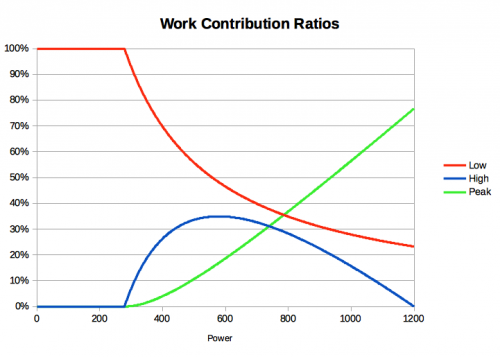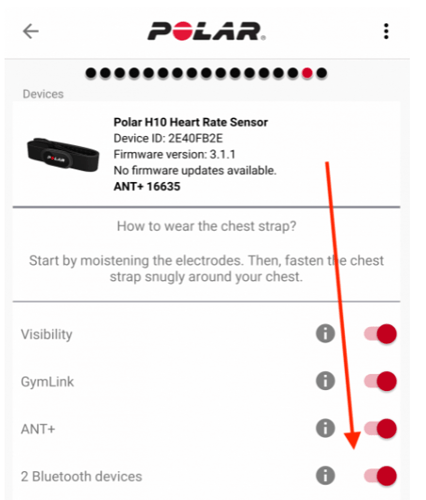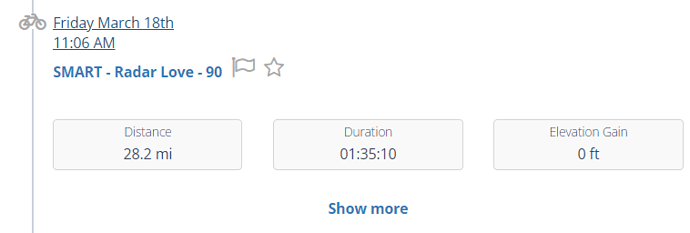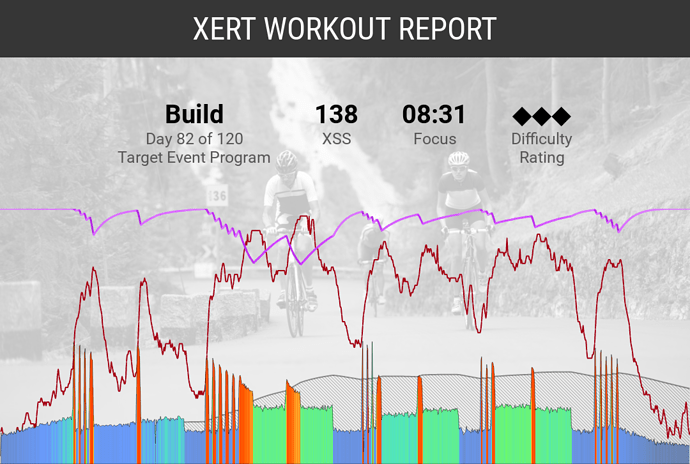This post was originally on the Facebook page but I thought I’d post it here now that we have a nice new forum. It also ties in nicely with the latest podcast episode.
During a recent discussion on the TrainerRoad forum regarding TrainingPeaks’ new adaptive training plans, an interesting comment brought up the issue of TSS and in particular the Form metric of the PMC not taking into account the difference between a 200 TSS endurance ride and a 70 TSS cross race: The race can leave you feeling drained even although the form number will be higher than after a long ride.
Glad to say this is something that Xert builds into its Status but I’m not sure that many users fully appreciate or understand how it works.
The following is an explanation of the inner workings of Xert’s Stutus:
Based on your Threshold Power, High Intensity Energy and Peak Power, XSS is proportioned to each of Low XSS, High XSS and Peak XSS, as shown in the first graph, taken from Xert’s online help.

As is the case with the Coggan/Allen PMC, these are tracked as exponentially weighted averages for both Training Load (CTL) and Recovery Load (ATL) with the difference being Form (TSB). Rather than taking the total XSS and using a single decay rate (42 for CTL and 7 for ATL) Xert uses different decay rates for each of components of XSS as shown in the screenshot taken from Xert’s XPMC settings page. The different components are calculated separately and then added together to give the overall Training Load.
The graph above shows the breakdown of Low, High and Peak XSS for my own 2019 data, just as it is plotted in Xert.
The second shows overall Training Load (blue) and Form/Status (coloured dots on grey). The Training load line is accompanied by 3 scaled versions: +80% (green), +40% (orange) and -40% (red). These lines form the boundaries for overall freshness/tiredness which can be one off the following:
- Detraining (brown): Form above 80% of Training Load.
- Very Fresh (green): Form between 80% and 40% of Training Load
- Fresh (blue): Form between 40% and 0% of Training Load
- Tired (yellow): Form between 40% and -40% of Training Load
- Very Tired (red): Form below -40% of Training Load
Note how the upper boundary of Tired is the same as Fresh, which brings us to the third graph: Form for High + Peak XSS.
This works in exactly the same way as the normal PMC but just looks at Training Load, Recovery Load and Form for High + Peak XSS. I’ve only plotted the Form as it’s all that’s used. Above zero in green and below in red. High + Peak Form is used to qualify the Fresh and Tired statuses:
- Fresh: High + Peak Form > 0
- Tired: High + Peak Form < 0
What this means is that even although you could have an overall form that would put you in the bracket for Fresh (between 0 and 40% of Training Load), your High + Peak Form can pull this back down to Tired if you’ve done too much high intensity work recently.
The training adviser in Xert takes your status and recommends workouts on the following basis:
- Detraining, Very Fresh and Fresh: Endurance and High Intensity workouts based on the phase of the training programme and the desired ramp rate.
- Tired: Endurance workouts only
- Very Tired: Recovery workouts or Rest only
I think this quite neatly deals with the problem that a low XSS race or hard effort can leave you in feeling tired for days but a high XSS endurance ride can leave you fresh the next day.
From a personal point of view, I must admit that this is my second time around with with Xert. Previously I had used it in conjunction with TrainerRoad and WKO and although I found it interesting, I was little frustrated with the ‘black box’ approach and a slightly clunky interface. The fact that I wasn’t really following the training adviser didn’t help either. This time I’ve gone full-in and plan to use it all the way through to my main event in April.
Taking the time to not only understand what the system is trying to achieve, but also how it’s trying to do it has been an eye opener for me. At this stage I don’t understand every aspect of it, but those bits that I have worked out make perfect sense and I hope that posting this here will help others appreciate the excellent work that the Xert Team are doing and demystify some aspects of the black box.







